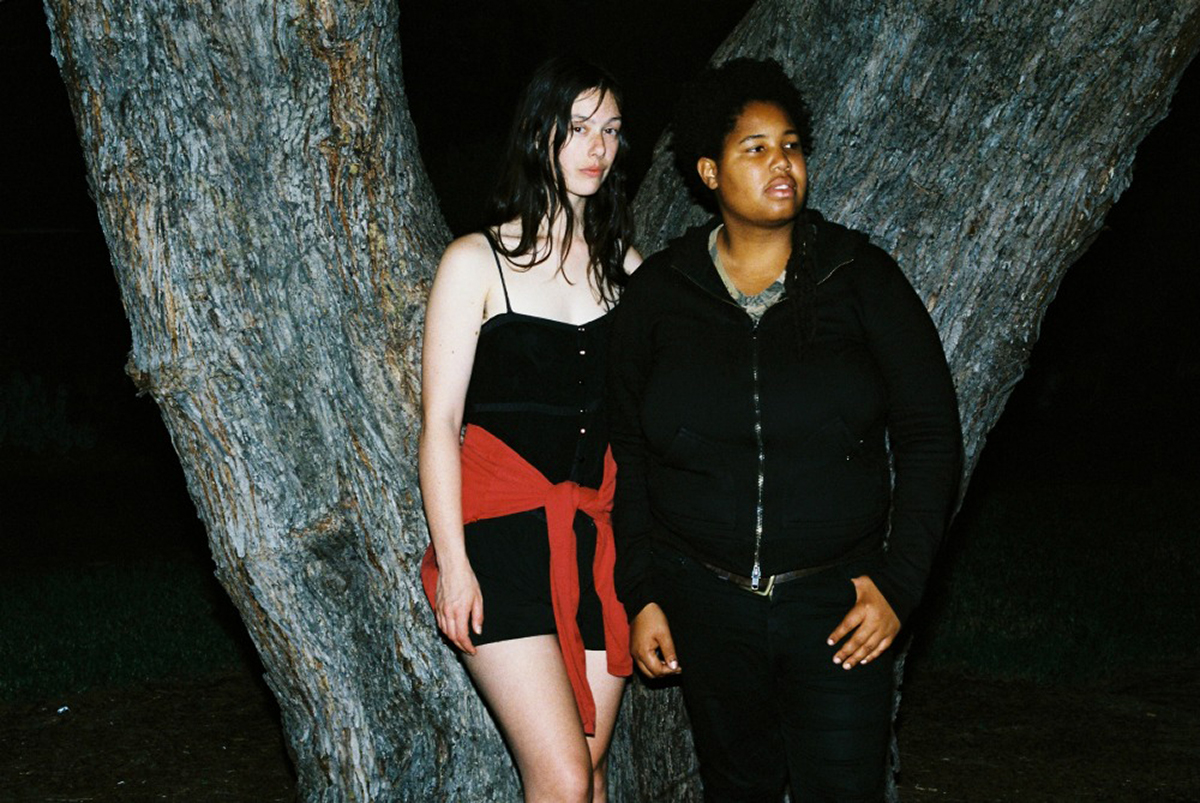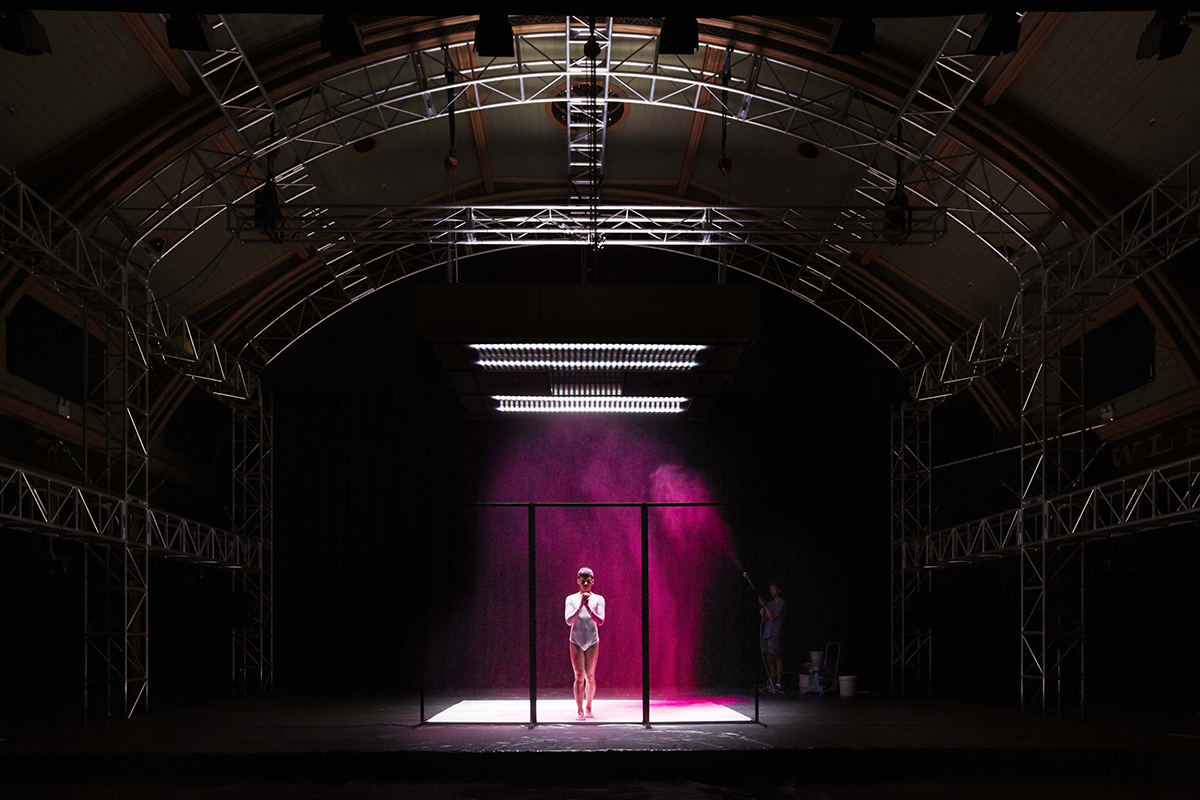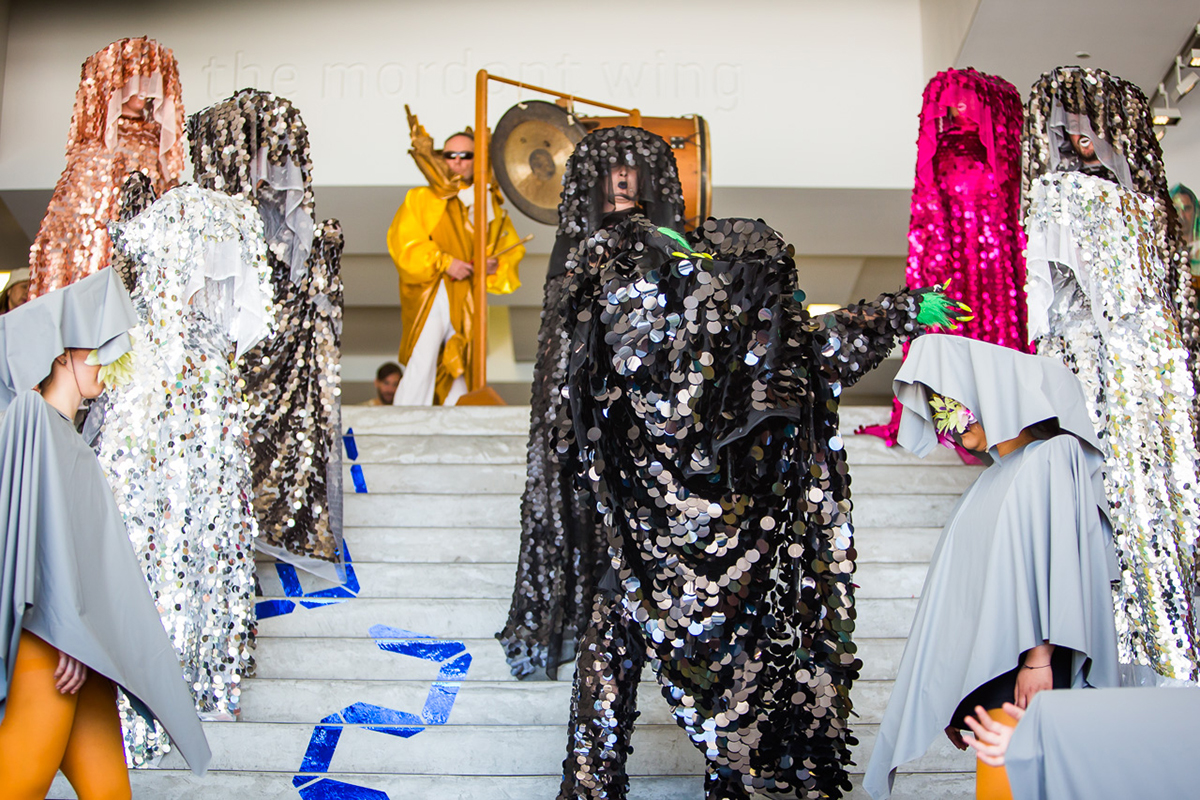
Soft Centre: Festive hardcore
Soft Centre, a new, big, bold 12-hour festival of electronic music programmed by Jemma Cole, Thorsten Hertog and Sam Whiteside has added depth and scale with light works commissioned by Whiteside and collaborations between musicians and performance artists curated by Alice Joel at the Casula Powerhouse Arts Centre in Sydney’s west.
A Made Up Sound, from the Netherlands, Brooklyn’s Via App and Australian artists Jasmin Guffond, hndsm/Louis McCoy, Harold, Makeda and Lawrence English are some of the experimental electronic musicians who will be performing in Soft Centre. As well, Jannah Quill and waterhouse will collaborate with performance artists while groups phile and Divide and Dissolve will play as one.
The festival draws together a wide range of experimental, queer, underground and politically conscious artists and promises to transform the building’s interior with “the extremities of electronic music” (press release) and rare works of scale. I spoke by phone with Alice Joel about her curation of the collaborative performances.
How did you go about forming the collaborations?
The Soft Centre team booked the music and DJ line-up and then gave me free rein to choose four artists from the line-up and curate collaborations between each of them with artists from other fields.
What’s your background that’s brought you to this kind of project?
I originally built sets and props for film and TV but got a bit disillusioned and started building things for live events in both galleries and music festivals. It’s always been about facilitating and building for artists, be it performance artists or dance troupes or DJs and I guess doing this for Soft Centre is the next logical step towards not just building spaces for artists but more about curating them into each other’s spaces, so to speak.
That’s a fairly exciting development for you, I imagine, bringing the artist out in you.
I have a vision about who might successfully collaborate with who, who can vibe off each other, whose practices complement each other and now it’s about facilitating whatever resources and ideas that they need. So I’m less of an artist and more of a producer, but definitely needing that bigger vision to see where everyone slots in and how it works in this unique space — Casula Powerhouse is so beautiful.
Sam Whiteside, who’s one of the directors of Soft Centre, has booked three light installation artists. So that’s a whole other element for all the artists to work within as well. There are so many variables.

Vanishing Point, House of Vnholy, photo courtesy the artists
Let’s talk about the House of Vnholy who will stage a performance with the live music of waterhouse. What prompted you to put those two together?
Most of the other artists I have a bit of a relationship with, but these two, both Melbourne-based, I’ve never met. It was really a leap of faith in terms of whether they could collaborate, because it’s not just about concepts of work, it’s also about personalities and working styles.
I had listened to everybody on the Soft Centre line-up. I listened to waterhouse (Jade Foster) and I was really familiar from Dark MOFO with the work of Matt Adey, the creative director of House of Vnholy. Even at a distance I could see that there were some things that definitely connected. Both are really occupied with rituals, with epic myths and with the Gothic. You can really feel that in waterhouse’s work. I had a feeling she might be up for a collab because she has a lot of accompanying visual material with her tracks online. I got in touch with Matt and he jumped at the chance. They had a few preliminary conversations and got along really well. Of all the collaborations they spent the most time in conceptual territory. Their relationship with Greek mythology will interpreted through music, dance, props and light, which is Matt’s forte. It’ll be a very striking and a quite still performance.

Passing Within & Singing for New Stars, Hossein Ghaemi, photo Anna Kucera
Where will that be staged?
In the main Turbine Hall, the biggest space at Casula. In so many raves or music events, the visual focus is so much on the front stage, whereas, particularly with waterhouse and House of Vnholy, we’re putting collaborations on a raised platform in the centre of the room to play with and distort the sense of the venue. The eyes of the audience will be drawn all over the space. It’ll re-address what it means to be at a gig. Matt and Jade are really playing with that.
The musician SIMONA is collaborating with Adonis and Beau Kirq in a performance described in the festival’s press release in terms of “The Dames of Dungeon Kink and two Cyber Goth Queens armed with boxing gloves.” Tell me about it.
SIMONA (Simona Castricum), Adonis (video, photo and performance artist Anastasia Zaravinos) and Beau Kirq are champions of queer underground culture — techno, party, kink and fetish culture. SIMONA is the DJ but she also does a lot of live drumming so Adonis and Beau will take their cue from her heavy beat in a very jarring, very physical performance.
Hossein Ghaemi, an artist who makes remarkable costumes, and his choir are collaborating with musician Jannah Quill.
Jannah‘s a DJ and a noise artist. Hossein has 10 dancers and 10 singers he’s costumed and has created a choral arrangement with Jannah who’ll be providing a techno soundscape for the collaboration. I’ve watched the work come to life over the past couple of days and it’s really incredible. Hossein is larger than life, crossing the line into very theatrical territory which, I think is pretty unique in a techno or electronic music festival space. There’s a real sense of play and scale and colour and light. It’s very joyful.
Tell me about phile’s collaboration with Divide and Dissolve, an unusual combination.
Divide and Dissolve [Takiaya Reed, guitar, saxophone; Sylvie Nehill, drums] are an incredible punk doom band who spend their time between San Francisco and Melbourne. They’re collaborating with phile [Hannah Lockwood, musician, producer; Gareth Psaltis, electronic musician, DJ] from Sydney. They’re very different music acts and will be creating a whole new sound together. We’ve scheduled them for five days of rehearsal. Divide and Dissolve are incredibly politically charged. Their whole thing is black supremacy as a response to white supremacy, but with black supremacy being a message of hope and reclamation for minorities and Indigenous peoples all over the world. Their performance will be very politically charged and, I think, a sombre moment in the festival. It will be less about the light and the space and a lot more about creating walls of sound that might be quite confronting for an audience, more a moment for reflection rather than partying.
Let’s talk about the light works commissioned for Soft Centre. Meagan Streader is one of the artists and has created some remarkable sculptural, installation and site specific light works over the years.
There are three light installations. The two by Sam Whiteside and Hyper Reelist [Jobe Williams] act as stages, not traditional stages but using the industrial interior of Casula to create really immersive light spaces. Meagan’s work will be installed in a wholly discrete, immersive space between the stages where people can be quiet and contemplate where they are.
Hyper Reelist is playing with the height of the space with light helixes that twist down and around the artists playing on one of the smaller stages, really connecting the audience with the players, erasing the line between them. Sam has built a giant six by four metre illuminated scaffold, very industrial and illuminated with white LED lights and strobes. It’ll be in the Turbine Hall with a lot of the DJs working from it.
What’s important to you and the Soft Centre team about the way you’ve worked with your collaborating artists?
It’s about giving them space to do whatever they want. They have full autonomy over their sets and what kind of noise they want to make and the space they want to take up. None of us is really 100% sure how this collection of live acts is going to pan out and that’s part of the allure.
Let’s hope it’s the first of many more such events. It could be a great template.
I hope so.
Obviously “soft centre” evokes “softcore,” in opposition to “hardcore,” but was there a more particular reason for the naming of the festival?
This is co-director Thorsten’s explanation: “I guess it’s kind of tongue in cheek. We push what most people would call ‘hard’, ‘challenging’ music and experimental performance/light art, which usually exist on the fringes because they aren’t easily digestible or don’t fit politically polite norms. But our community finds solace and peace within that. Spaces that champion the strange, murky and ‘hard’ are inviting, inclusive — it’s our ‘soft spot.’ I also think about lava cakes and how you have to dig to get to the delicious, gooey centre. The good stuff isn’t found on the surface, it isn’t always visible, you only find it if you dig.”
Are you expecting a good turn-out?
Yes, ticket sales are great. I think people are excited about the venue, about being out in Liverpool and Casula, which is a really beautiful area, and I think they’re excited about a gig that’s not only 12 hours, but really, really immersive.
–
Soft Centre, Casula Powerhouse Arts Centre, Casula, Sydney, 23 Sept
Top image credit: Sylvie Nehill, Takiaya Reed (Divide and Dissolve), photo courtesy the artists






